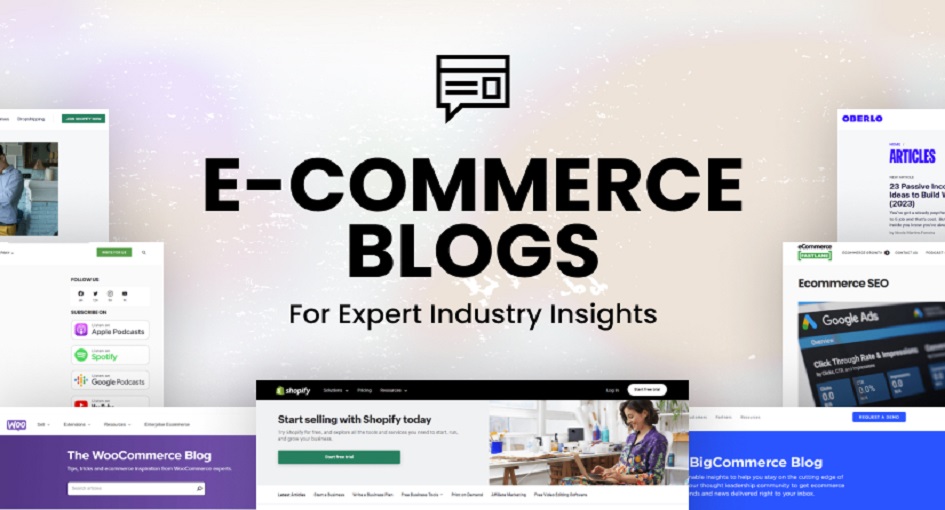
In the ever-expanding realm of e-commerce, blogging has emerged as a potent tool for boosting both website traffic and sales. When done strategically, an e-commerce blog can engage your audience, provide valuable information, and drive conversions. This article explores various effective strategies to increase visitors and sales through e-commerce blogging.
At the heart of every successful e-commerce blog lies high-quality content. It’s essential to create informative, engaging, and well-researched articles that resonate with your target audience. Relevant and valuable content not only attracts readers but also establishes your brand’s authority and credibility.
Search Engine Optimization (SEO) is a critical component of e-commerce blogging. By conducting keyword research and incorporating relevant keywords into your content, you can improve your blog’s visibility on search engines. Effective on-page SEO practices, such as optimizing meta titles and descriptions, using header tags, and creating SEO-friendly URLs, are essential to ranking higher in search results.
Consistency in publishing is key to maintaining and growing your blog’s readership. Develop a content calendar and stick to it. Whether you choose to post weekly, biweekly, or monthly, ensure that your audience can rely on a consistent flow of fresh, valuable content.
While shorter blog posts have their place, long-form content (typically over 1,000 words) tends to perform better in search rankings. Long articles allow you to explore topics in-depth, providing comprehensive information that can establish your blog as an authoritative resource.
Don’t underestimate the power of visuals. Incorporate eye-catching images, infographics, and videos into your blog posts. Visual content not only enhances the reader’s experience but also increases the likelihood of social sharing and engagement.
Ensure that your blog’s design is user-friendly and mobile-responsive. A clutter-free layout, easy navigation, and fast page loading times are essential for retaining visitors and reducing bounce rates.
Effective CTAs encourage readers to take desired actions, such as subscribing to your newsletter, making a purchase, or sharing your content. Strategically place CTAs within your blog posts to guide visitors through the conversion funnel.
Craft content that readers are eager to share with their networks. Whether it’s practical guides, inspiring stories, or thought-provoking insights, shareable content can expand your blog’s reach organically.
Collaborate with influencers, industry experts, or other bloggers in your niche. Guest blogging on reputable websites or inviting guest bloggers to contribute to your blog can introduce your content to new audiences and enhance your blog’s credibility.
Building an email list is a valuable asset for e-commerce bloggers. Encourage visitors to subscribe to your newsletter for updates, exclusive content, and promotions. Email marketing allows you to nurture leads and convert them into paying customers.
Share your blog posts on social media platforms to extend your content’s reach. Engage with your audience on social networks, respond to comments, and actively participate in relevant communities or groups.
Regularly review your blog’s performance using analytics tools. Track metrics such as traffic, bounce rate, conversion rate, and user behavior to gain insights into what’s working and where improvements are needed.
Reward your blog readers with exclusive discounts or promotions. Highlight these offers within your blog content to incentivize purchases and drive sales.
Showcase user reviews and testimonials on your blog, especially on product pages. Positive reviews build trust and confidence in your products, increasing the likelihood of conversions.
Experiment with different elements on your blog, such as headlines, CTAs, and visuals, through A/B testing. This iterative approach helps you identify what resonates best with your audience and drives the highest conversions.
Create blog content that demonstrates how to use your products or services effectively. Visual tutorials and step-by-step guides can help potential customers understand the value of what you offer.
Recognize that not all visitors are at the same stage of the buying journey. Tailor your content to cater to visitors in different stages, from those seeking information to those ready to make a purchase.
Implement remarketing campaigns to re-engage visitors who have previously interacted with your blog or website. Show them relevant ads or offers to bring them back and encourage conversions.
Keep an eye on your competitors’ blogs to gain insights into their strategies. Identify gaps in their content and explore opportunities to offer unique perspectives or solutions.
Actively seek feedback from your customers and blog readers. Use their input to improve your products, services, and content to better align with their needs and preferences.
In conclusion, e-commerce blogging offers a wealth of opportunities to increase both visitors and sales. By prioritizing quality content, optimizing for SEO, maintaining consistency, and employing various strategies such as email marketing, social media promotion, and user reviews, you can create a blog that not only attracts a broader audience but also converts readers into loyal customers. Remember that success in e-commerce blogging is an ongoing journey that requires dedication, creativity, and a commitment to delivering value to your audience.